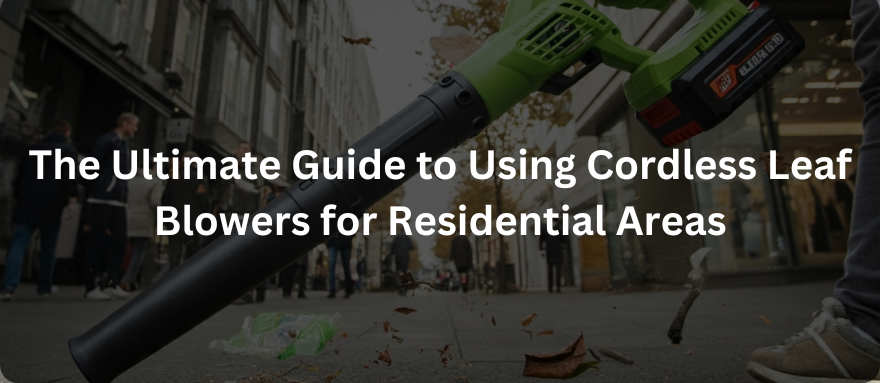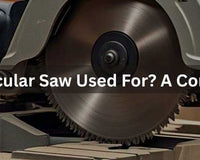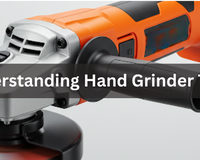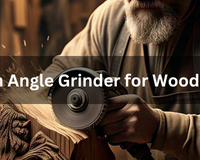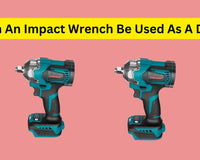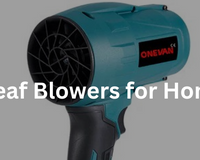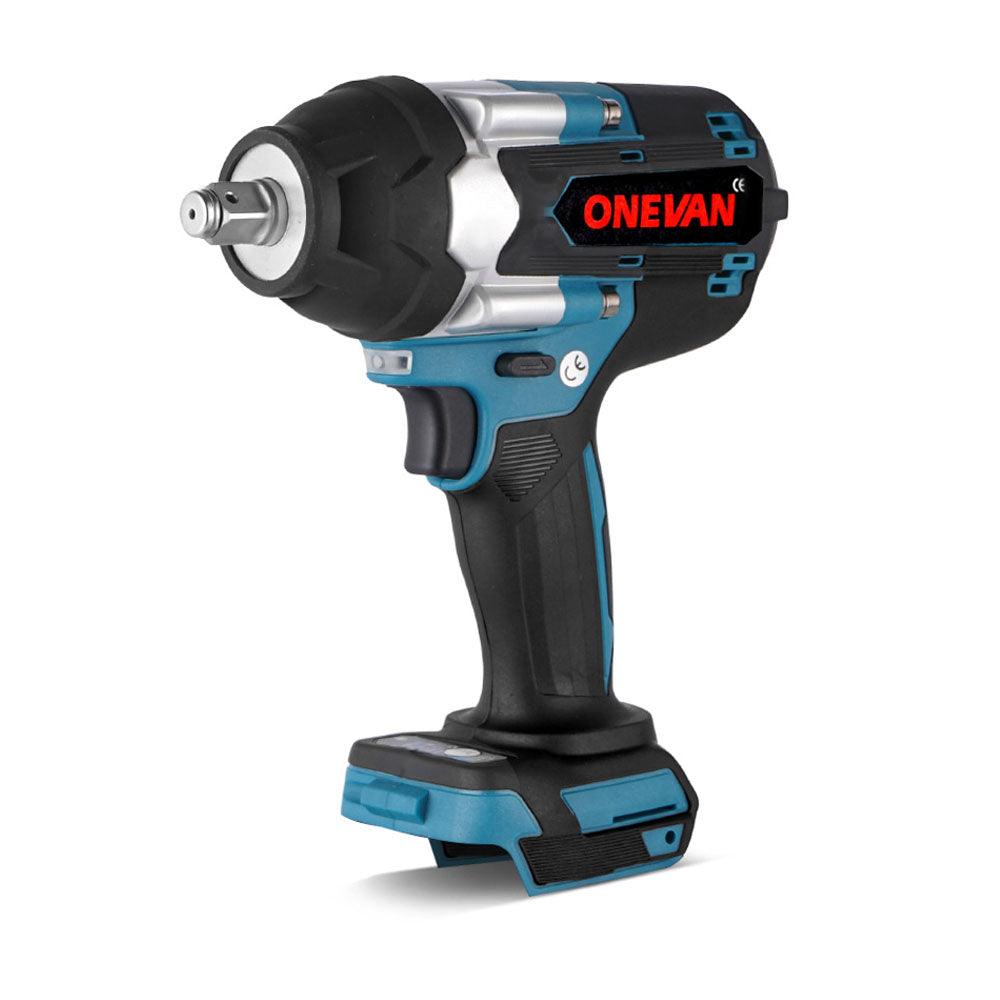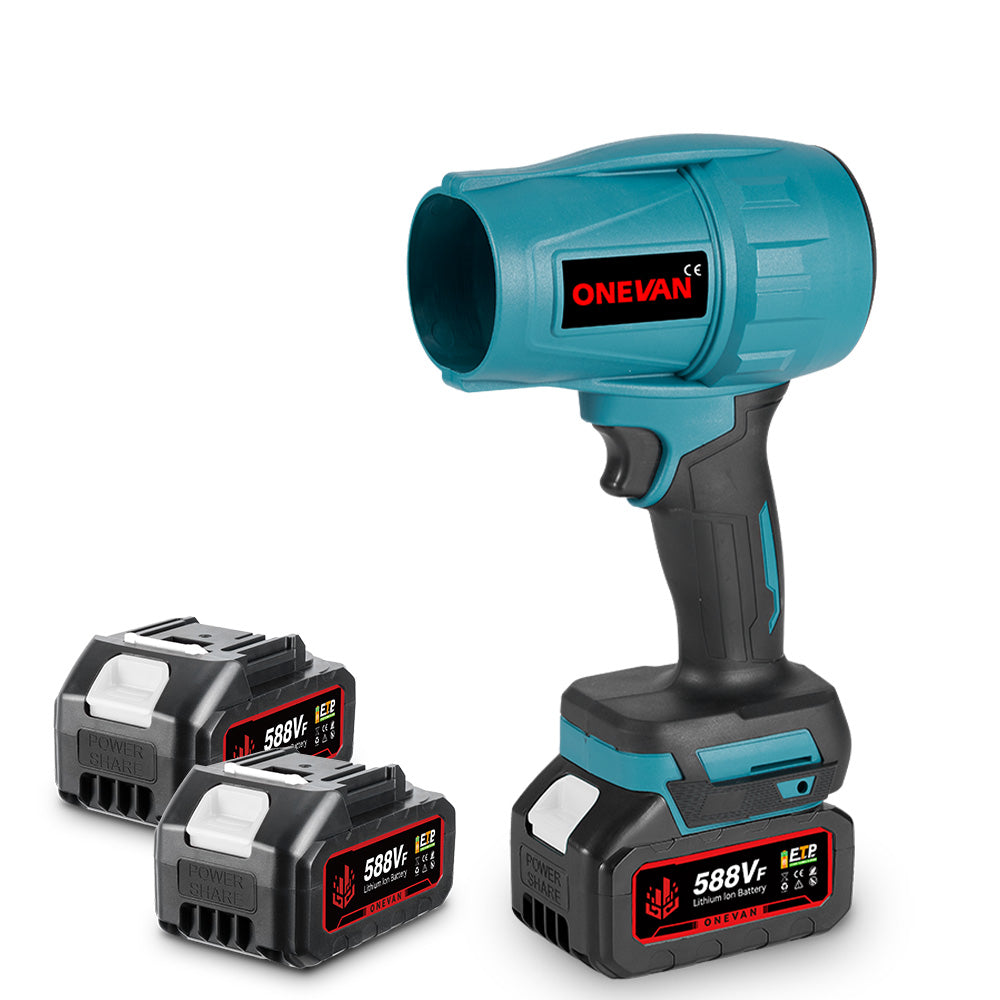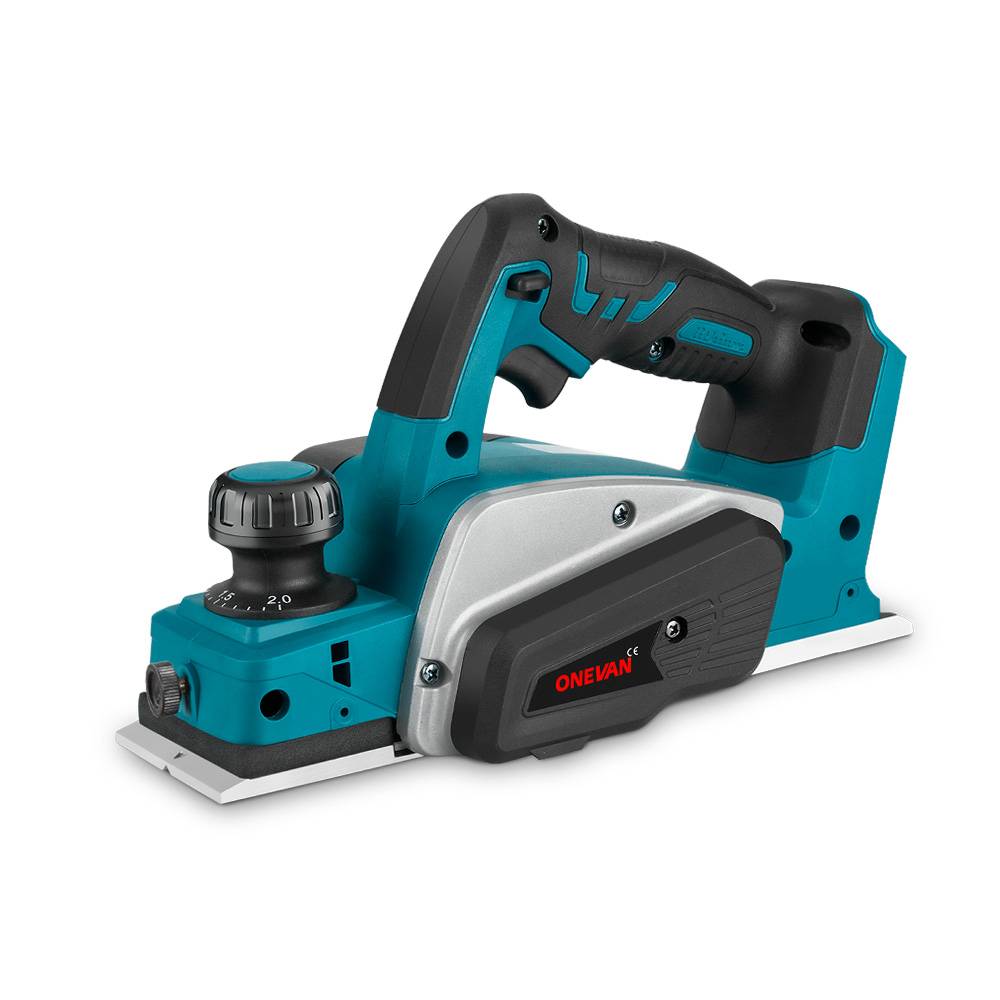Does your gas leaf blower get on your nerves because of the sharp sound? Do your neighbors give you a hard look every time you operate your leaf blower? Don't worry. Many people are moving to battery cordless leaf blowers, and the reason is obvious: convenience and peace of mind.
Research reveals that well over 60% of homeowners are concerned about the noise around them. No one wants to be that noise maker.
Like a neighbor with a loud leaf blower that never seems to stop. Cordless blowers are quite revolutionary because of how quiet they are. Just imagine: you clean the irritating leaves falling on your driveway without disturbing anyone!"
This article is your one-stop shop for cordless leaf blower knowledge! You will grab the basics, like how they work and what to consider before buying. We'll also share expert advice on how to use battery-operated blowers effectively.
1. Benefits of Cordless Leaf Blowers for Residential Use

Cordless leaf blowers are becoming very popular for yard work in neighborhoods. People like them because they have many advantages over gas blowers. For example, they are quieter and don't pollute the air.
Neighbor-Friendly:
One of the key benefits of cordless blowers is their minimal noise levels. Gas blowers are noisy and can operate at levels over 70-80 decibels, sometimes comparable to a motorcycle. Cordless blowers are significantly quieter than gas blowers. They operate at around 65 decibels. You can compare it to normal conversation. This is a major advantage for people living nearby.
Convenience in Storage:
One more thing, the convenience of using cordless blowers is that they are easy to store. They are also portable in size and weight. Storing them in a garage or a shed may not be difficult, even when their space is small. Gas blowers are... again, different.
They are often quite large and relatively heavy. You may need to obtain a specific storage facility you use for a gas blower. A typical cordless blower might weigh around 5 pounds and be about 2.2 feet long, whereas gas blowers often exceed 10 pounds and 3 feet in length.
Versatile Tasks:
A cordless blower is one of the tools that every gardener will find very useful. Smaller blowers are usually suited for lighter tasks like blowing dust and grass clippings. There are many applications for these. Are you facing dust on your driveway or patio? Cordless blowers can handle that too.
Most of them have different speeds and nozzles so that you can use them for all sorts of things. This allows modification of the strength of the air. Areas, such as flower beds, can have a low speed with a gentle action. You can clear heavier obstacles with a high-speed airgun.
Immediate Use:
Cordless blowers are easy to use and ready to move immediately. You don't have to worry about mixing fuel or priming the engine. You push a button, and it starts. This is much easier than starting a gas blower. The batteries in a cordless blower give power to the motor right away.
Multi-Functional Attachments:
Some cordless blowers support additional attachments, such as brushes for cleaning or vacuum features. You can add a brush to clean patios and decks. You can also add a vacuum attachment. This turns the blower into a vacuum for leaves and other debris.
2. Key Features to Look for in a Residential Cordless Leaf Blower
Battery Tech:
Forget just "bigger is better." We need to talk about the types of batteries. Lithium-ion is the standard, but look for higher energy density (Wh/kg). This means more power packed into a lighter battery. Also, check the discharge rate (C-rating). A higher C-rating means the battery can deliver more power to the motor for a stronger blast of air.
Motor Efficiency:
Not all motors are created equal! Look for brushless DC motors, as they are generally more efficient and durable compared to brushed motors. To get a notion of how strong the motor is, look at its wattage (W) score.
Impeller Design:
This is the fan inside the blower. The number of blades, their shape, and their design significantly impact airflow. Some blowers employ axial fans for superior airflow, while some choose centrifugal fans to achieve greater pressure (beneficial in shifting heavy rubbish).
Air Velocity vs. Air Volume:
It is not only about the speed but also the volume of the air that impacts the performance. CFM (cubic feet per minute) is used to calculate how much air is moving. Subsequently, mph (miles per hour) measures how quickly this occurs. A high-quality blower will balance both CFM (air volume) and mph (airspeed) for optimal performance. For instance, a blower that has high CFM but low mph is suitable for clearing small trash such as dry leaves. A blower with higher mph and less CFM might be more appropriate for shifting wet leaves or large litter.
Noise Reduction Technology:
It's not just about the decibel rating; some manufacturers incorporate features like vibration dampening and optimized fan blade design to minimize noise. This might include things like vibration dampening, optimized fan blade shapes, and acoustic insulation.
Advanced Electronics:
Advanced electronics in some blowers can enhance performance. Features might include electronic speed control, overload protection, and thermal monitoring. They protect the motor and power source.
Durability and Build Quality:
Look for models with durable housings, high-quality switches, and weather-resistant seals. These elements guarantee that your blower can withstand the wear and tear of frequent usage.
Specialized Nozzles:
Different nozzles can dramatically affect performance. A concentrator nozzle focuses the airflow for increased velocity, while a wide-angle nozzle spreads the airflow to clear larger areas. Some blowers even have gutter-cleaning attachments with curved nozzles.
3. Practical Tips for Residential Use
Clearing Leaves from Lawns and Gardens
Map your route: Before you even start the blower, take a look at your yard. Where are the leaves the thickest? What direction is the wind going? You should aim to push leaves in the same flow as the wind and begin from the part that is far from where you wish for leaves to finish.
Harness the breeze: If a soft wind is blowing, make use of it for your benefit. Push the leaves towards the direction where the wind is already moving them. It's like having an extra helper!
Nozzle know-how: Think of your nozzles like different tools. The wide nozzle is like a broom, sweeping leaves across the lawn. The narrow nozzle is like a precise tool, getting into those flower beds and around delicate plants.
Start at a lower power level to conserve battery life and reduce noise. If you need more power, it is always possible to ramp up; however, commencing at lower levels preserves your battery life and maintains tranquility.
Pile 'em up: As you blow, imagine you're herding sheep. Gently guide the leaves into neat piles. This makes them much easier to pick up with a rake or leaf vacuum.
Cleaning Patios and Driveways
- Gentle start: Imagine you're dusting a delicate vase. You wouldn't blast it with air, right? Start with a low speed to avoid sending dust and dirt flying everywhere.
- Focus your power: Switch to the narrow nozzle. It's like using a high-pressure water stream to clean off stubborn dirt.
- Divide and conquer: Break down your patio or driveway into smaller squares. Clean one square at a time. It's like cleaning your room – tidying one area at a time makes the whole job less overwhelming!
- Corner crew: Those corners can be tricky! You can incorporate an angled nozzle to move debris from corners and edges. You need to reach tight places when you're cleaning your bathtub.
- Off the edge: Don't just blow debris around on the patio. Aim your blower so you push the dirt and leaves off the hard surface and onto the grass. This makes it much easier to rake or sweep up later.
Gutter Cleaning with Cordless Blowers
Ensure Safety: Before ascending the ladder, confirm its stability and position on firm ground. Wear protective glasses to safeguard your eyes against flying fragments. This is analogous to wearing a helmet before bicycle riding!
Attach a curved gutter cleaning nozzle: This unique nozzle leads the wind along the gutter, similar to a water chute for leaves.
Go with the flow: Start blowing at the end of the gutter where the downspout is. This pushes the leaves towards the downspout and prevents clogs.
Please take a rest: Do not keep the blower in operation constantly. Allow it to stop every so often. This will stop it from getting too hot. This is similar to drinking water during outdoor play on a warm day.
Final verification: When you finish, please examine the gutters. Confirm there is no presence of leaves or other rubbish. If water goes down smoothly via the downspout, then everything appears fine to proceed.
Seasonal Usage Tips
Autumn: Think of those wet leaves as soggy cereal. They're heavy and stick together. Use your blower's high speed and airflow to blast them away. A vacuum attachment can be a big help, like sucking up the crumbs after breakfast!
Spring: It's time for spring cleaning! Employ a soft action (slow speed) to eliminate minor rubbish like flower petals and small branches. A tool with a brush can be useful for dusting pollen off exterior chairs.
Summer: Once you finish cutting the grass, use your blower to remove annoying leaf fragments. Blowing away dust and dirt particles maintains the cleanliness of the patio and paths. It is the same as quickly organizing your yard after a full day of activity.
Rainy days: Your blower dislikes becoming wet. Try to avoid using it in extremely damp conditions. If you need to employ it under such circumstances, proceed cautiously and ensure it is fully dried after usage.
4. Safety Tips for Using Cordless Leaf Blowers at Home

Safe Operating Procedures:
Always wear safety glasses to protect your eyes. Small rocks and sticks can fly up when you use the blower. Wear sturdy shoes with good grip. This helps you stay steady on slippery leaves or wet grass. Never point the blower toward another person. The powerful air can hurt them. Ensure that children and pets stay away from the work area. This includes children and pets. Remember that the blower is strong. It can blow around heavy things.
Electrical and Battery Safety:
Use the charger that came with your blower. Other chargers might not work correctly. Don't use a battery that is cracked or damaged. This can be dangerous. Keep the battery away from hot things. Heat can damage the battery. Store your battery in a cool, dry place when you're not using it. This helps it last longer. Don't leave the battery charging for too long. This can wear it out faster.
Awareness of Surroundings:
Before you start:
- Look around your yard.
- Make sure no people or animals are nearby.
- Watch out for tree branches to avoid injury.
- Be careful if the ground is uneven. You might trip.
- If you have allergies, wear a mask. The blower can blow dust and pollen into the air.
- Be aware of how loud the blower is. You might want to wear ear protection.
5. Top Cordless Leaf Blower Models for Residential Use
ONEVAN 2-in-1 Handheld Foldable Cordless Air Blower:
This eco-friendly blower is a perfect tool to clean small yards and patios. It's both lightweight and convenient to use. Now, blowing leaves into piles or vacuuming is pretty smooth. It has three different power settings. This lets you choose the right power for the job. It features a foldable design, significantly saving storage space. It's also quiet so that you won't disturb your neighbors.
ONEVAN Turbocharged Blower Wind Machine:
ONEVAN Turbocharged Blower looks small in size but encompasses much power! A house owner can incorporate it for cleaning hard-to-reach places. Use it inside your car, in your garage, or even to clean your computer keyboard. Moreover, it incorporates Makita batteries, which is helpful if you already own Makita tools. It has a comfortable grip and is easy to control.
ONEVAN Cordless Garden Hairdryer:
This is our most powerful blower. It can clear large areas quickly. It can handle lots of leaves and even blow away light snow. It has a strong motor and six different settings. It's a good choice for big yards and tough jobs. The battery lasts a long time, so you can work longer without recharging.
ONEVAN 6-Speed Adjustable Cordless Electric Blower:
This blower is excellent for cleaning inside the house. It can be used to remove dust from furniture, shelves and blinds. This cordless tool is also very useful in tidying up electronic devices such as computers and keyboards. This cordless leaf blower comes with 6 different speed settings. The weight is significantly low. You can effortlessly store it anywhere in your house.
ONEVAN 5500W Cordless 5-Speed Snow/Leaf Blower:
This blower is a workhorse for all seasons. It can clear leaves in the fall and snow in the winter. It has five different speed settings to handle different tasks. It's powerful but quiet. It's also designed to be comfortable to use, even for long periods.
6. Conclusion
Cordless leaf blowers are contemporary power tools that assist you in keeping your yard tidy without disturbing your neighbors. They're quiet, lightweight, and easy to use.
You avoid tangled cords and smelly gas. Subsequently, they come in different sizes and styles to fit your needs. Choose a cordless blower and enjoy a quieter, cleaner yard.
7. FAQs
1. How Quiet are Cordless Leaf Blowers?
Leaf blowers without cords are more silent than those using gas. Often, they operate at approximately 65 decibels, which is similar to regular talk. They become a fine option for communities where sound disturbance could be an issue.
2. Can Cordless Leaf Blowers Handle Different Types of Debris?
It is possible, yes! Cordless leaf blowers can shift leaves, cut grass, and cut small twigs. They can also handle light snow. Some types offer more power for handling heavier rubbish, too.
3. Are Cordless Leaf Blowers Eco-Friendly?
Yes, they are a more environmentally friendly option. They do not require gas or oil, so no fumes are produced. This is good for your health and the surroundings.
4. How Do I Choose the Right Airspeed and Airflow for My Needs?
Consider what you require to clean. A greater speed of air is beneficial for wet leaves or heavy debris. If the area is large and has dry leaves, a higher airflow would be better suited.
5. Are There Cordless Blowers Suitable for Wet Conditions?
It is best not to use any blower in very wet conditions. However, some types can resist water more than others. Search for characteristics like sealed switches and designs that can withstand the weather.
6. What Attachments Are Available for Cordless Leaf Blowers?
Many blowers are provided with additional accessories. These can comprise a vacuum to absorb leaves, a brush for cleaning, or diverse nozzles suitable for varying tasks.
7. How Do I Choose Between Blowing and Suction Features?
Blowing effectively clears big spaces, and suction is useful for gathering leaves into a container. Certain blowers possess these two characteristics, thus providing the most favorable conditions from both sides.

